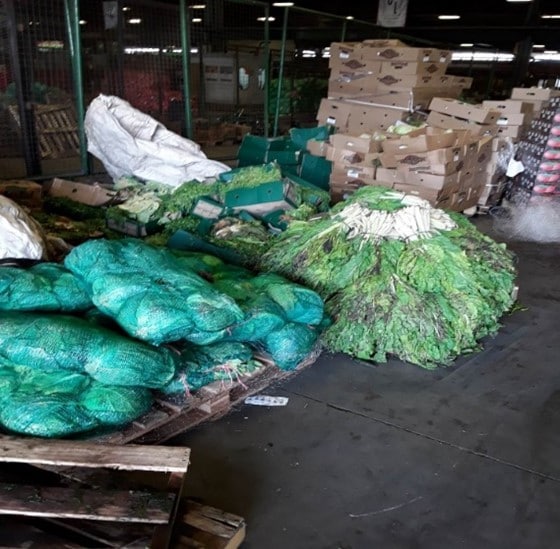Estimated reading time: 5 minutes
Post-harvest losses are described as fruit and vegetables produced that do not reach consumers due to quality and quantity degradation. Food is a delicate commodity and approximately 1,3 billion tons produced for human consumption are lost globally per annum. Post-harvest losses of fresh produce have been a concern for both farmers and sellers since the inception of agriculture.
This is the first in a series of three articles that aims to address the challenges of post-harvest losses faced by smallholder farmers as a solution to addressing food security
The global population is projected to reach 9,7 billion by 2050. This will require a 60% increase in global food production compared to the period between 2005 and 2007, alongside more equitable access to food. Additionally, over 815 million people are chronically undernourished, especially in parts of sub-Saharan Africa and South Asia, where 22,8% and 14,7% of the overall populations are undernourished, respectively.
Losses of up to 50% reported
The highest losses in fresh produce reported fall in the categories of fruit and vegetables, root crops and tubers. Regional data for fruit and vegetable losses show that all regions across the globe lose at least 20% of their fresh produce, with extreme losses of 45 to 50% reported in Africa and Asia, respectively.
These figures coincide with the 50% of losses in mango, banana, oranges and pawpaw that smallholder farmers and street vendors experience in the Limpopo province of South Africa. In KwaZulu-Natal, the loss of tomatoes was reported to be 76,6%. Post-harvest losses in developing countries such as South Africa are caused by a lack of or limited access to food handling and post-harvest storage technologies.
Watch a Farm TV interview with the author here:
Post-harvest losses of food crops represent a loss of valuable food and of the inputs required to produce and distribute these crops. Given its substantial scale, reducing post-harvest losses will help create more sustainable and resilient food systems and reduce greenhouse gas emissions.
Furthermore, a reduction in post-harvest losses can simultaneously optimise agricultural productivity and increase the income of small-scale food producers and associated value-chain actors, especially women, who are traditionally responsible for many post-harvest activities.
The large amount of wasted food has led to an increase in food waste studies worldwide in an effort to quantify food waste, analyse and understand its drivers. A good understanding of food waste is critical to informing efforts to meet the Sustainable Development Goals of the United Nations, in particular Target 12,3 of Goal 12, the aim of which is to reduce food waste by 50% by 2030.
Causes of post-harvest losses
The causes of post-harvest losses and the stages at which they occur are numerous and vary depending on the type of crops produced, production processes, and climate in the specific region. Damage or loss can occur during all post-harvest stages. For example, part of the crop may be left unharvested in the field, split during transportation, or attacked by pests or microbes during storage.
Most smallholder farmers experience losses due to climate conditions (48%). These conditions include extreme temperatures, hail during the rainy season, and drought when there is not sufficient water for irrigation. A significant proportion of the losses occurs at farm level.
The degree of losses that occurs at farm level depends on factors such as the production methods used, weather conditions, pest and/or disease outbreaks, and market demand. The first-level handling occurs at the farm where the produce is graded and packed into boxes or crates and transported to the market.
Although there is a lack of proper cold transportation, only a few producers or farmers are concerned about the wasted produce due to the lack of cold transportation. Most farmers experience losses due to overproduction or producing the same produce as their competitors, which results in an oversupply at markets. Consequently, these farmers fail to sell their produce.


Lack of proper storage facilities such as cold storage at farm level is also a major challenge that smallholder farmers experience. They then store the produce in rooms inside the house to keep it away from the sun. The pictures below are an indication of the harvested produce stored inside the house while it awaits packaging and delivery to the market.
Most attractive produce sells first
Farmers reported a 9% wastage caused by produce being rejected at the market and returned because it does not meet the market’s quality standards. The size, shape and colour of the produce play an important role when sending the produce to the market, while the condition in which the produce is stored at farm level plays an important role when selling the produce.
These storage practices determine acceptance or rejection of the produce at the market. As consumers ‘buy produce with their eyes’, the most attractive produce at the market is the first to sell at a good price and the less attractive produce sells at a lower price. However, in most cases gets discarded.

Depending on the farmer, the produce might be collected for further use such as composting and feeding animals. If the produce is still fit for human consumption, it gets donated to charities. The other option is to allow the produce to be disposed of.
All these challenges can reduce the quantity or quality of food available. In addition, it can also have a negative impact on the associated income opportunities for smallholder farmers. Many of the challenges smallholder farmers experience are preventable through proper training, the adoption of appropriate tools or technologies, effective handling practices, sound policies and marketing-related improvements. – Manoshi Mothapo, ARC-Natural Resources and Engineering
For information, send an email to Manoshi Mothapo at mothapom@arc.agric.za.

